Summary
Summary
https://www.zdergisi.istanbul/makale/summary-69
Turkey Flora is in Turkish
Mehmet Bilgin
We see that the Ottoman state and East has been systematically examined from every angle since the XVth century by The Western scientists. The books based on the information obtained on these increasing journeys of XVIIIth and XIXth centuries are constituted the basis for the research on our country in many modern sciences. Since some of these travelers had studied modern botany at universities in their countries, during their travels, they collected plant samples, then pressed and dried and transferred to their countries.
 History and Importance of Scientific Plant Painting
History and Importance of Scientific Plant Painting
Gülnur Ekşi
I llustrating plants is more than a tradition based on centuries of history. It reveals the information that cannot be obtained with the camera. A photograph shows us whatever we see at first glance, the scientific plant pictures provide the specific information necessary for the diagnosis and classification of the plant.
Chinese Botanical Illustrations 
Feyza Betül Aydın
Plant painting began as a separate art form in China in the VIIth or VIIIth centuries. In fact, the Chinese botanical painting, which is fundamentally associated with Buddhist art , was very popular in the 10th century and became institutionalized as a prestigious art form during the period of Tang Dynasty (618-907)at that period supposed to reach the summit point of Chinese culture.
Australia Botanical Illustrations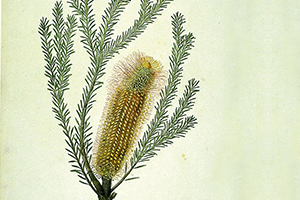
Gülay Özköprülü Pelin
Joseph Banks and Daniel Solender, who accompanied Captain Cook’s Pacific Expedition in 1770, are the first natural scientists to come to Australia, where the botanical art is based on a history of nearly three hundred years. While these two botanists created the first large collection of Australian flora, Sydney Parkinson, who was an artist in the group, did the first sketches of the collected plants.
Japanese Botanical Illustrations 
Mayumı Hashı
In Japan herbalism was introduced from China and had been read and studied in Nara period (8C) onwards. The earliest existing example of botanical illustrations in Japan is Bai-no-Soshi in 1267. It was in the Kamakura period in Japan and Samurai warriors had the ruling power. However, the most influential period for history of Japanese botanical illustration is the Edo period when the country was sealed off to the outside world for more than 200 years except for a few countries including Holland (the Dutch East India Company) which was the only western country that was allowed to trade in Japan. At the end of Edo period Tomitaro Makino was born (1862) and lived through Meiji period, Taisho period and Showa period until his death (1957). He is a great botanist and is called “Father of Japanese Botany”.
 From Past to Present Plant Painting in Iran
From Past to Present Plant Painting in Iran
Golshan Zare
In Japan herbalism was introduced from China and had been read and studied in Nara period (8C) onwards. The earliest existing example of botanical illustrations in Japan is Bai-no-Soshi in 1267. It was in the Kamakura period in Japan and Samurai warriors had the ruling power. However, the most influential period for history of Japanese botanical illustration is the Edo period when the country was sealed off to the outside world for more than 200 years except for a few countries including Holland (the Dutch East India Company) which was the only western country that was allowed to trade in Japan. At the end of Edo period Tomitaro Makino was born (1862) and lived through Meiji period, Taisho period and Showa period until his death (1957). He is a great botanist and is called “Father of Japanese Botany”.
 Europe Botanical Illustrations
Europe Botanical Illustrations
Serhat Kula
The moment when the flowers are sprouted from the soil, from the knop to the bud, the period from the seeds to the most mature state of flowers is the perfect source of inspiration for a painter. Those who can best catch this emotion on their paintings are the pioneers of classics in Europe, which is also called the “1660 School”. Rembrandt, Caravaggio, and Velasquez are the masters of the “still life” which is starred by lilacs, roses, hyacinths carnations.
History and Rebirth of Scientific Plant Painting in Anatolia 
Gülnur Ekşi
During the Seljuks and the Ottoman Empire, visual arts in Anatolia were intertwined with religious elements. Today, the works in these periods prepared the ground for the emergence of traditional Turkish arts such as calligraphy, illuminated manuscript, miniature, stained glass or ebru (marbling), which are, become the signatures of traditional Turkish arts.
 The Unique Projects Signature by Turkish Plant Artists
The Unique Projects Signature by Turkish Plant Artists
With the progress of plant painting in Turkey, work in this area has been concentrated on projects. Gülnur Ekşi, Işık Güner and Hülya Korkmaz are the names of our file editors, they are telling the adventure of plant painting in Turkey, they had tried for many years to make different interpretations with using the visual power of the plants to the large mass.
 Becoming a Painter in the Illustrated Turkey Flora
Becoming a Painter in the Illustrated Turkey Flora
Gürol Aytepe, Kezban Sayar, Sabiha Pala Sema Niğdeli and Nature Painters Group are the names in the second generation who preferred to take part in the adventure of scientific plant painting in Turkey. We describe how they meet with the scientific plant painting and their educational process.
 Steps of Preparation of Plant Drawings Within the Scope of Illustrated Turkey Flora Project
Steps of Preparation of Plant Drawings Within the Scope of Illustrated Turkey Flora Project
Fatma Şen
Scientific accuracy is our main priority in Illustrated Flora studies. Therefore, all the samples we work with must be in a scientific support. If we are working on dry sample we should definitely specify which herbarium sample we are using. If we are working on a live sample, we must make sure that the plant is properly dried and made into herbarium material. Because the herbarium in which the plant is found and information like the herbarium number are the reference of our studies.
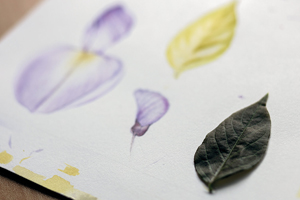 Plant Painting and Watercolor
Plant Painting and Watercolor
Hülya Korkmaz
The first drawing is very important. Important points to note in the drawing are branch and leaf connections, leaf stem lengths, vascular structure of the plant, rowing in the branches, number of vessels, flower structure etc. Naturally, the plant will fade very quickly and change shape as it is studied from the living object. Therefore, a fast sketch study should be done while the plant is alive..
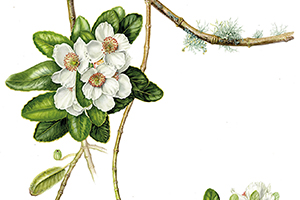 Complementary Role of Scientific Plant Picture and Botanical Studies
Complementary Role of Scientific Plant Picture and Botanical Studies
Gülnur Ekşi
The target of scientific plant artists is to exhibit the root, stem, leaf, flower condition, fruit and seed parts as well as bringing to the foreground distinguished characteristics of the plant. As well is considered as a target to express the plant in terms of individual color, scale and detail, to visualize the information in a specific composition and in a systematical way, to highlight important parts of the diagnosis and finally to be simple and clear as a rule.
 Christabel King
Christabel King
Gülnur Ekşi
Christabel Frances King was born in London in 1950. She completed his undergraduate studies in botany at London University and studied Scientific Illustration at Middlesex University for two years. Since 1975, King has been preparing botanical illustrations for Curtis’s Botanical Magazine (KEW) at the Royal Botanic Garden in London, and by 1984 she was also the editor of the magazine.
 Geraldine Mackınnon
Geraldine Mackınnon
Marianne North
Marianne North was born in Hastings, England in 1830. She was a Victorian lady perfectly represents the adventurous spirit of many European women of her time, whom attracted by the idea of knowing new wild worlds, left the comforts of their wealthy lives and went in long trips searching for new horizons. Short after she became forty, her beloved father Fredrick North passed and Marianne felt deeply sad and depressed, and she decided to travel all around the world. This decision changed her participation to this very world: she became an artist, whom one of the most inspirational and influential women in botanical illustrators and she accomplished her desire to discover and record what she called “the garden of the world.”
 Blues, jazz, folk and leaves: Rory McEwen
Blues, jazz, folk and leaves: Rory McEwen
Feyza Betül Aydın
Rory McEwen is a Scottish born literally artist. Music, painting, poetry, cinema and plastic arts… He’s been working on each one of them and whenever he was working on any of them, he was doing it with love. He reflects an refreshed and innate talented master.
 Literature of Plant Drawing
Literature of Plant Drawing
Ayşe Yazar | M. Fatih Kutan
Plant drawings, floral motifs, ebrus, ornaments, decorations,the beauties of the entrance page of a writing work say about their era more than many books and texts. You can think of the literature review here is a modest itemisation of texts trying to gain space in the face of drawings and designs.
 Dioscorides and de Materia Medica
Dioscorides and de Materia Medica
Mehmet Bilgin
Dioscorides is neither the first botanist, nor the first medical botanist, nor the first doctor. It is a book about plants, animals, and mines used to make medicines, which makes his name ensured until today and differentiates him from his counterparts: In Latin language is know as de Materia Medica.
 Atlas of Russian Medicinal Herbs
Atlas of Russian Medicinal Herbs
Mehmet Bilgin
I n this article we will try to introduce you to the Russian Medicinal Herbalist Atlas. It was prepared by a pharmacologist, botanist and cell scientist Ord. Professor S. Ivanov Vladimir Karlovic Varlikh (1859-1922) who was a teacher at the Tsarist Military Medical Academy.
 Academic Pen of Colorful Lines: Nebahat Yakar
Academic Pen of Colorful Lines: Nebahat Yakar
Tuğrul Körüklü
T he fact that Professor Dr. Nebahat Yakar’s scientific works as well as the drawings in his books are drawn by him, carries Yakar’s works in a unique position. The plant drawings at the Colourfull Atlas of Turkey’s Plant also reveal her ability in botanical painting. In addition to these drawings called plates in fascicles
 Turkey’s Floristic Wealth
Turkey’s Floristic Wealth
Mecit Vuralı Gülnur Ekşi
Turkey has very rich geological formations, like different kind of rocks supportedby rich minerals in different structures and ages. The lands formed on these rocks and in different climate types are also very rich. Turkey’s various soil types with different characteristics also support rich flora.
 Botanical Gardens and their Importance
Botanical Gardens and their Importance
Prof. Dr. Tuna Ekim
The idea of a botanical garden is as old as history. Before 2000 B.C., Persians and Assyrians established parks and gardens to raise fruit and ornamental plants. People begin to care about plants other than nutrition, starting with the use of plants for medical purposes
 Zeytinburnu Medical Plant Garden
Zeytinburnu Medical Plant Garden
Murat Dinçer Çekin
Zeytinburnu Medicinal Plants Garden carries the goals of an academic botanical garden: to research and produce plants, to conservation of new plants and to spread them, to protect threatened plants, to develop biodiversity, to make people understand plants and to encourage this culture, to create recreation area. ZTBB specifically aims to take attention to medical plants, contribute to benefiting from medical fluids, educate how to grow medical plants and use them effectively and safely
 Flowers of Ottoman
Flowers of Ottoman
Prof. Dr. Nurhan Atasoy
Gardens of palaces are the primary gardens of the Hasbahçes, which belongs to the sultan, are described as “Garden of Eden” because of their beauties. Gardens of the Ottoman Sultans are not similar to any other Islamic or European gardens. Ottoman gardens are places that have the opportunity of free development. The tradition of giving fruits in baskets and flowers on trays during ceremonies has found a wide application area. It was also a tradition to send fruits and flowers to Sultan during his visits gardens around the city by embassies close to that area. Flowers also take place in ceremonies related to the Ottoman Navy: when the navy sails to and returns from the Mediterranean Sea and also ship launching ceremonies.
 Şükûfenâmes (pron.: shuekufenameh, “Flower Book”)
Şükûfenâmes (pron.: shuekufenameh, “Flower Book”)
Dr. Seyit Ali Kahraman
According to the story told in Şükûfe books; to Ebussuud Efendi, the famous Shaykh al-Islam of the Sultan Süleyman the Magnificent, a tulip bulb was brought from Bolu as a gift, and Ebussuud Efendi raised this tulip bulb so the curiosity towards tulip and cultivation of it in İstanbul have begun. Perhaps because they all comes from the same source, this rumor has been transmitted in all the Şükûfenâmes. We transferred 9 pieces from these flower prints in contemporary Turkish and published it with the name of Ottoman Florists and Flowers and 10 pieces with the name of Şükûfenâme.
 Archeological Museum Opened Flowers
Archeological Museum Opened Flowers
Candan Nemlioğlu
Şükûfenâme in the Museum of Archeology is the manuscript, which includes the maximum number of floral depictions among the Şükûfenâmes with depicted paintings in İstanbul libraries. And there are twenty tulips with special names from18th century. Because of each flower design is unique and reflects the characteristics of the period, each of them has a separate significance and value.
 Turkish Rococo
Turkish Rococo
Nazlı Durmuşoğlu Utku
I n the first quarter of the 18th century, the influence of French culture, which started to be shaped by the new “Rococo Movement”, had been introduced to Yirmi Sekiz Mehmed Çelebi who was sent to France, thus, it started to show Western inspiration in Ottoman art. In these early periods, Turkish artists created a new style called “Turkish Rococo” by internalizing Western cultures with their own taste and understanding of art.
 The Dry Fruits Room Of Topkapı Palace
The Dry Fruits Room Of Topkapı Palace
For 300 years non withered flowers
Mamure Öz
I n Topkapı Palace harem district, this 4x4 m² room known as the dry fruits room, made for Sultan Ahmed the 3rd, is a spectacularly planned design masterpiece from top to the bottom.
 Flowers and New Designs of Müzehhib Kara Memi the Famous Artisan of Divan-ı Muhibbi
Flowers and New Designs of Müzehhib Kara Memi the Famous Artisan of Divan-ı Muhibbi
Gülbün Mesara
Kara Memi was not only limited to what he learned in nakkaşhane(house of artists) of court, but immortalized his name with compositions he created in a naturalistic way of expressing his own taste and opinion. Elements that made Kara Memi so special and unique for classical Ottoman ornament are the new styles which he created inspired by nature, as much as his exquisite artfulness to apply this style to the branches of art.
 Ornamentations of Kara Memi and The Style of Flowers
Ornamentations of Kara Memi and The Style of Flowers
M. Semih İrteş
Our professor, Ord. Professor Dr. Süheyl Ünver was the first person who introduces Nakkaş Kara Memi to us with his publication on him in 1951. While he describing the existence of a new flower style in the ornamentations of the Kara Memi, his statement, “Just as Mimar Koca Sinan is in our architecture, Kara Memi is also a place in Turkish ornamentations” is a summary of his ornamentation.
 An Attention Toward the Motifs of the Karahisârî’s Qur’an Ornamentation
An Attention Toward the Motifs of the Karahisârî’s Qur’an Ornamentation
Abdullah Oğuzhanoğlu
The Qur’an of Karahisârî is a masterpiece of his age in his field, which is possible to include the works written up to today and day-to-day. In classical style with gold and navy blue, all the pieces of the mushaf are finely decorated in a great balance and harmony. According to the page layout, each page has four seats and the heads and title pages according to the flow of pages are processed in the finest detail.
 The Great Apprentice of Nakkaş Şahkulu and Honorable Master of Nakkaşhane Sultan Süleyman Han: Müzehhib Kara Memi
The Great Apprentice of Nakkaş Şahkulu and Honorable Master of Nakkaşhane Sultan Süleyman Han: Müzehhib Kara Memi
Zehra Çekin
Person whom is mentioned as “Kara Memi” in the book of artisan from 17th century in the Topkapi Palace, is nakkaşbaşı (the head of artists) Kara Mehmed Çelebi of the court who elaborated Divan of Kanuni Sultan Süleyman (Suleiman the Magnificent written and signed with his pen name Muhibbî. It is not known the year and place of birth, his education, how he became an artisan, initiated to the court, and where he entombed. According to the book of artisans (ehl-i hiref defteri) from the Kanuni Sultan Süleyman period, Kara Memi after the death of his master Şahkulu, took on task of nakkaşbaşılık and became a master of many nakkaş (an artisan).
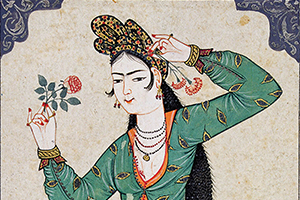 Levnî and his Signature
Levnî and his Signature
Mehmet Bilgin
L evnî, whose real name was Abdülcelil Çelebi, was born in Edirne in the end of the 17th century and came to İstanbul, after he entered as a apprentice with a nakkaş (miniaturist, traditional painter) master. After graduating from Nakkaşhane, started to work on gilding and saz, then turned to the miniature. He is a miniature master who gave his works in a period of war-free and fun-filled period known as the Tulip Era in our history, died in Istanbul in 1732 and was buried in the Sedirler Tekkesi next to the Otakcilar Mosque
 An Unknown Artist of Our Art History: Ali en-Nakşibendi er-Râkım And Flowers
An Unknown Artist of Our Art History: Ali en-Nakşibendi er-Râkım And Flowers
Azade Akar
Aliyyü’l-Nakshibendîr-Râkim is an important name that depicts the flower world with its own attitude under the influence of rococo, empire and baroque styles. A book that we have guessed painted on 1807 (1222 H.) At our disposal gives us a great deal of information about this painter. Apart from this single book, no documents or signatures have yet been found about his personality or other works
 Naturalist Style Flower in Ottoman Book Art
Naturalist Style Flower in Ottoman Book Art
Ali Fuat Baysal
The naturalist style flowers are often used in manuscripts, such as books, plaques, muraqqas, fermans, and tughras, not only as a component of ornamentation but also as an independent composition, often on the first and last pages of writing works and sometimes in an entire book or album decor. It has also come to prominence in the masterpieces that reflect the art of the period in terms of design, color, workmanship in such as religious book containers, cildbends (book binders), writing desks and writing pads.
 The Lord of the Tulips: Shaykh al-Islam Veliyyüddin Efendi
The Lord of the Tulips: Shaykh al-Islam Veliyyüddin Efendi
Prof. Dr. Tahsin Özcan
The 75th Shaykh al-Islam of the Ottoman State was born in Istanbul, Silivrikapı. His father Hacı Mustafa Ağa and his grandfather Hüseyin Ağa were solakbaşı in their Janissary troops. Veliyyüddin Efendi’s interest towards tulip and cultivation of it was not just a hobby, but is an artwork that is skillfully dealt for him like in other fields. This interest which has been going on for centuries between the Ottoman Empire at the beginning of the 18th century, it became a great movement, and Veliyyüddin Efendi became one of the important actors of this movement. In the sources, it is explained that Veliyyüddin Efendi cultivated 35 different kinds of tulips.
 Famous Tulip-lover, Owner of the Seed, Flower Admirer Hattat Şeyhülislam (Calligrapher Shaykh al-Islam) Veliyüddin Efendi
Famous Tulip-lover, Owner of the Seed, Flower Admirer Hattat Şeyhülislam (Calligrapher Shaykh al-Islam) Veliyüddin Efendi
Zeki Kuşoğlu
I assume that, while Veliyüddin Efendi was busy with caligraphy on the other hand he was so keen to cultivation of tulips. But this amateur interest imminently attracted other tulip lovers, such as the famous Damat İbrahim Pasha. He took Veliyüddin Efendi under his wings. Right after, tulip he cultivated by the name of “Nihal-i işve” became beloved of all.
 İstanbul Tulips in Our Civılization and Effects to Other CulturesFERDA
İstanbul Tulips in Our Civılization and Effects to Other CulturesFERDA
Olbak Mazak
L ove and curiosity of flower is a common and widespread passion that interests everyone in the Ottoman Empire, from the village to the city. Rose and tulip in all these flowers have a special place in the life of Turkish people. The Turks did not only grow tulips in their gardens, but they embroidered them everywhere they liked, ranging from marble to fabric to porcelain to silver. I suppose it is hard to find another nation in the world that is the flowers went down on history, has huge volumes of flowers book, which is reflected in the economic and social life, which flower love is the inspiration for literature and art. This flower is a fine pleasure and contemplation way in our geography has gained importance as a sign of wealth and nobility in western lands.
 Flower Motifs in Fes Labels
Flower Motifs in Fes Labels
Burçak Evren
The contradiction between feminine prevalence and production in the everyday life has been maintained for many years, even after the fact that this new headgear have to be imported from abroad, even after the fed factories have been built and started to produce.
 A Life Dedicated to Art: Cahide Keskiner
A Life Dedicated to Art: Cahide Keskiner
Zehra Çekin
Cahide hanım entered in 1953 a frenetic but enjoyable working tempo with Süheyl Ünver who works like a beaver to revive Turkish Islamic art. According to Cahide Keskiner; “The art of ornaments has a great effect on spirituality and belief. Cenab-ı Hakk[God] will inspire the eyes of the müzehhib, the eye, the heart, will make the dough, and the müzehhib will begin to draw pens with the brush. When the drawing is made like dhikr, the artwork comes out. Thousands of lines and points are made as if they worship with faith. When a person takes a piece of art, he feels his spirituality, his cosmic influence in his heart, and it creeps. Art has a divine amulet. Art is the gift of Allah Almighty.”
 Turkish Ebru Art and The Flower
Turkish Ebru Art and The Flower
Ahmet Sacid Açıkgözoğlu
I n my opinion, the ebru is like a modest dervish among people in all the arts. It’s always on the doorstep. It has not thinking about taking the lead for ages. In an article that is supposed to be brought up urgently, it is immediately thought of as a rim. If the conditions for decorating and gilding are not available on the side papers, ebru is selected. Ebru is in a role of a dervish who does not care for admittance, with his quick catching up and seeing the desired position. The absolute beauty always walks, love is immortal, ebru is on the edge of the door. If the invitation comes it is ready to serve.
 Naturalist Flower Painting in Ebru Art
Naturalist Flower Painting in Ebru Art
Firdevs Çalkanoğlu
Whether we call it full stylisation or semistyling in the art of ebru, let’s say that the naturalist current or the appropriate flower according to the truth is official. The result is the painting of the flower on the water. Hezarfen Necmettin Okyay, which we can characterise as flower figurines, has taken a look at the flower and studied it
 The Open Flowers on Tiles of Timeless Space Saray-ı Hümayû
The Open Flowers on Tiles of Timeless Space Saray-ı Hümayû
Nur Yörük
I n the project process of our exhibition called “Timeless Space Saray-ı Hümayûn” with the drawing the prototypes of stylized or semi-stylized flowers used in Topkapı Palace ornamentations, a scientific approach to designing is considered. In line with this idea, flowers are depicted both as stylized and as reality in nature. The aim is with to emphasize the anatomical origins of stylized plant motifs in our traditional arts, bring together an abstract and tangible reality.
 Ferman and in Berat Natural Flowers
Ferman and in Berat Natural Flowers
Plant Patterns in Turkish Weaving Art
Kerime Yıldız
Tughra is the most noticed and aesthetically part of the documents such as edict, franchise, and foundation certificate-charter. It can be seen that the first known Ottoman tughra was on a foundation certificate-charter given by Orhan Gazi.
 Flowing Life in Fusty Rugs
Flowing Life in Fusty Rugs
Plant Patterns in Turkish Weaving Art
Murat Öztabak
The best examples of Turkish folk art in the universal dimension are carpets, rugs and textiles. The ongoing tradition of the weaving of the Turks since Central Asia has gained a different dimension with the conquest of Anatolia. Rugs that are a symbolic world, perhaps the most beautiful examples of abstract painting. These symbols serve as a bridge between the inner world of man and nature and become interpreters of the most sincere feelings. Almost all of the human feelings such as sorrow, joy, excitement, longing and even envy have their place in these motifs.
 A Message in The Bottle
A Message in The Bottle
Needlepoint says…
Gülin Şenyuva
The life that accelerates over time has made communication ordinary as it made like many things. One side our age-old man who decide from the little yellow faces which ones will better express their feelings then painted the feelings with his finger by touching the tip of his finger. On the other side a man of the past time who works fine thin, color to his sadness of sorrow, joy, secret love... Now even people do not know what they mean just with their beauty, they conciliate people as it was in the past, today they continue to talk to anyone who knows their language.
 Flowers by Fountain
Flowers by Fountain
Mehmet Yılmaz
Çeşme “fountain” that comes from çeşm in the Persian language means “eye” is a generally accepted knowledge. This origin causes to call çeşm for springs of water, wells and fountains and to give çeşme as a name for all structures run water. As a matter of fact, if the garden and garden wells feed from the underground waters, the holes that provide them with water are called göz “the eye” .
 Flower and Tree Pictures in The Mosque of Kayapa Village
Flower and Tree Pictures in The Mosque of Kayapa Village
Mehmet Bilgin
The richness of the Kayapa Village Mosque in terms of pen ornamentation made us think that the artistic elements of the Ottoman Civilization that we saw the most beautiful examples in Istanbul were faced with a reflection in other parts of the country and even in mountain villages.
 Kalkandelen City and Alaca Mosque
Kalkandelen City and Alaca Mosque
Kemal Kaya
Kalkandelen was built at 450 to 500 meters above the Vardar Plain, at the foot of Mount Shar. Alaca Mosque (Macedonian: Шарена Џамија Şarena Camiya, Albanian: Xhamia e Pashës) is located on the main street, which divides the third largest city of the Republic of Macedonia, and almost a nonesuch mosque in all the Balkans. The mosque will leave the people amazed with its Baroque Ottoman style. Around the Alaca Mosque on UNESCO’s cultural heritage list, the Kalkanderen İslamic Society built an Ottoman-style wall in 1991. The mosque’s last importanmaintenance was in 2010.
 Atik Vâlide Mosque the Secret Nakışs from Obscure Nakkaşs
Atik Vâlide Mosque the Secret Nakışs from Obscure Nakkaşs
Zehra Çekin
Before, the social complex was known with the name of Valide Sultan but after the mother of Ahmed the 3rd Gülnûş Vâlide the sultan built the complex to the Üsküdar pier square, she was called as Vâlide-i Atik or Atik Vâlide. The width of the building is supported by interior decoration. As in all the works of Sinan, and in the Atik Vâlide Mosque, the decorations on the facades, which have significance with the harmony of the proportions, are too few. On the other hand, we see that there is a very rich decoration in the interior. The precious paintings of Atik Valide Mosque will be the source for inspiration of the artist of today’s and tomorrows.
 Tree of Life Fade Determination Exam
Tree of Life Fade Determination Exam
Süleyman Faruk Göncüoğlu
According to the story, “Tree of Life” is as old as the first human Adam (a.s). It is a symbol that establishes a connection between this world and the other world. It is a test that determines the destiny of man. His attitude, which is the door to this trial, has been regarded as sacred to mankind spreading almost every geography of the earth. The Tree of Life has become a sign that God is the same as the idea and that fertility, healing, life, death, sadness, and happiness are shown.
 Culture Valley Project is on the way to be awarded
Culture Valley Project is on the way to be awarded
Merve Sağlık
As the first step of the Cultural Valley Project, we can say Topkapı Culture Park. This area has been transformed into a 1453 Conquest Museum surrounded by recreation areas. The second area of the Valley of Culture is the Mevlevîhâne and Merkez Efendi Mosque. This area is a treasure lost in workshops, small factories and warehouses for years. This area was cleaned in a short time and opened up. The last examples of civilian survivors here have come to life in the houses. “We want to have 24-hour activity in Zeytinburnu Cultural Valley. These centers are opened by the Municipality of Zeytinburnu with the motto ‘We are making the account of being able to benefit from the sea from the beach and from the historical places’. After that, the rest is up to us and the residents of İstanbul.
 The Place of Yenikapı Mevlevihanesi on the History of Turkish Music
The Place of Yenikapı Mevlevihanesi on the History of Turkish Music
Ruhi Ayangil
At the end of the XVI. century [h.1006 / c. 1597] Yenikapı Mevlevihanesi founded on the land wihich doneted throught a glant by the Janissary clerk Malkoç Mehmet Efendi to Kemâl Ahmed Dede, from its foundation to the year 1925 when the tekke and the zawiya were closed, it was not merely a dergah (âsitâne) that the Mevlevi shaykh and his people find pleasurable,at the same time, both religious and non-religious Turkish music, The Mevlevi Tekke Music, which took its inspratios from the Mevlevi culture,mosque music, became a leading production and application space of scientific studies with these musics, and other music and musical works. Until the time of its foundation, our musical Mevlevî Tariqa (Order) are among the unforgettable names of our music historians with the works they have published and the works they have put out with the spiritual appetite and inspiration they have received from the lover most of the composer or muhib composer, the theorist and the performer. As far back as the day it was established, many of the composers, the theorists and the performers of our music from Mevlevi Tariqa (Order) were among the unforgettable names of our musical history with the artifacts and the works they had put out with the spiritual advance and inspiration they received from this dergah.
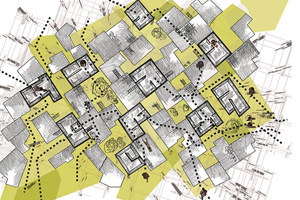 Urban City
Urban City
Şevket Ercan Kızılay
While the horizontal urbanization has been adopted in many developed countries of the world, it should be considered that the formation of vertical urbanization is so intense in Turkey. In this, with the influence of the mentality factor, it seems that the rent process is the main determinant. Therefore, the approach that urgently regards urban land as a means of rent must be abandoned. As Recep Bozlağan expressed, we are living in a stuck state in very narrow areas. The municipalities are urged to produce land even if they are affected by legal regulations. As a form of speculative gain, rent can not be so determinative only by producing more land.
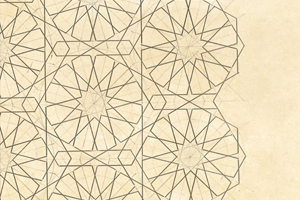 “Geometrical Patterns Work of Unknown Masters”
“Geometrical Patterns Work of Unknown Masters”
Serap Ekizler Sönmez
Serap Ekizler Sönmez works on geometric designs that have not been well studied. She leaves his work in the field of chemistry and tries to cover the shortcomings in the literature with her drawings and works after she has passed on to the art fields that she has established links between. Besides the books she writes, she as well gives lessons and organizes workshops. The interview we made with Sönmez about the sources of high aesthetics in Islamic architecture gives us a clearer view of the floor and details of the book Sketch Book of Ottoman Architecture
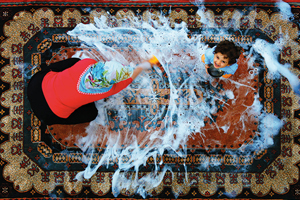 Interview with Zeytinburnu Mayor Murat Aydın on Photography
Interview with Zeytinburnu Mayor Murat Aydın on Photography
We talked with Zeytinburnu Mayor Murat Aydın about his photography interests and phographical art. It is possible to find here the roots of the photo competition traditionally organized by Zeytinburnu Municipality
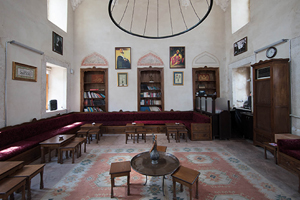 Abdülbaki Paşa Dârülkurrâsı Nağmedar
Abdülbaki Paşa Dârülkurrâsı Nağmedar
Murat Öztabak
Abdülbaki Paşa Dârülkurrâsı is a mirror of the classical Ottoman style. The squareshaped structure is covered with a bulletshaped dome. Rectangular windows forming the bottom row with a flat-arched door around the wall enclosed by the northern wall are framed by a marble jamb. Abdülbaki Paşa was one of the places that were made in the development of the Valley of Culture Project that took place in the city of Zeytinburnu at the beginning of the 2000s. Since the last few years, it has been performed every Saturday in this beautiful place called “Nağmedar” and the unique moods of the mystic music rising from the inside integrate with the spiritual climate of the Central Efendi creating a unique atmosphere. The naked embroidery of the Atik Vâlide Mosque, which opens like a flower in Üsküdar’s chest, will continue to be an inspiration for today’s and tomorrow’s artists.
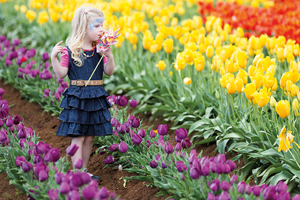 Lâle’s Journey in Australia
Lâle’s Journey in Australia
Hilkat Özgün
The Australian Turkish Cultural Platform(ATCP), is volunteering to promote Turkey and its rich culture to people with whom we live together. The Tulip Festival has special importance for the promotion of our country. Other societies living in Australia know that land of tulips is Netherland. The visitors are amazed and asks their meanings when they see Turkish events in tulips garden. The festival visitors, whom learn that the main land of the lâle tulip is Turkey, their interest in Turkish culture and Turkey immediately increase.
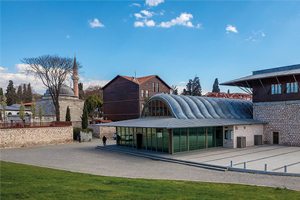 A Turgut Cansever Heritage: Central Efendi City Library
A Turgut Cansever Heritage: Central Efendi City Library
Murat Öztabak
of the lâle tulip is Turkey, their interest in Turkish culture and Turkey immediately increase.
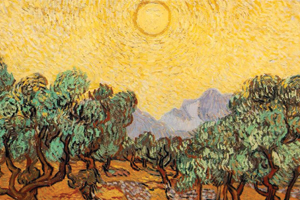 Feyza Rümeysa Altındal… By the Olive
Feyza Rümeysa Altındal… By the Olive
I t wasn’t the only news that the flood had ceased, the dove brought back by carrying an olive branch to Noah’s ark, which it took away to bring news from beyond the waters. Another news it carried in its beak was that there was a vigorous survivor right outside of the ark, where everything is perished: the olive tree. It is probably because of this story that the olive tree is seen as a symbol of immortality, rebirth and peace in myths and mythologies in all cultures from Egypt to Asia, from Asia to Anatolia.


